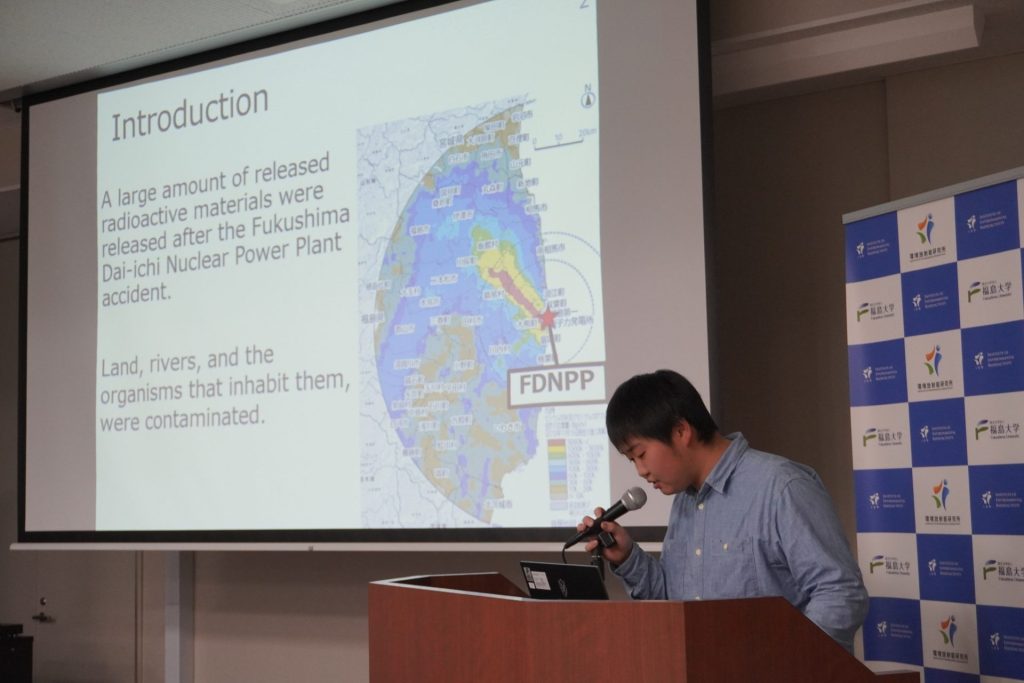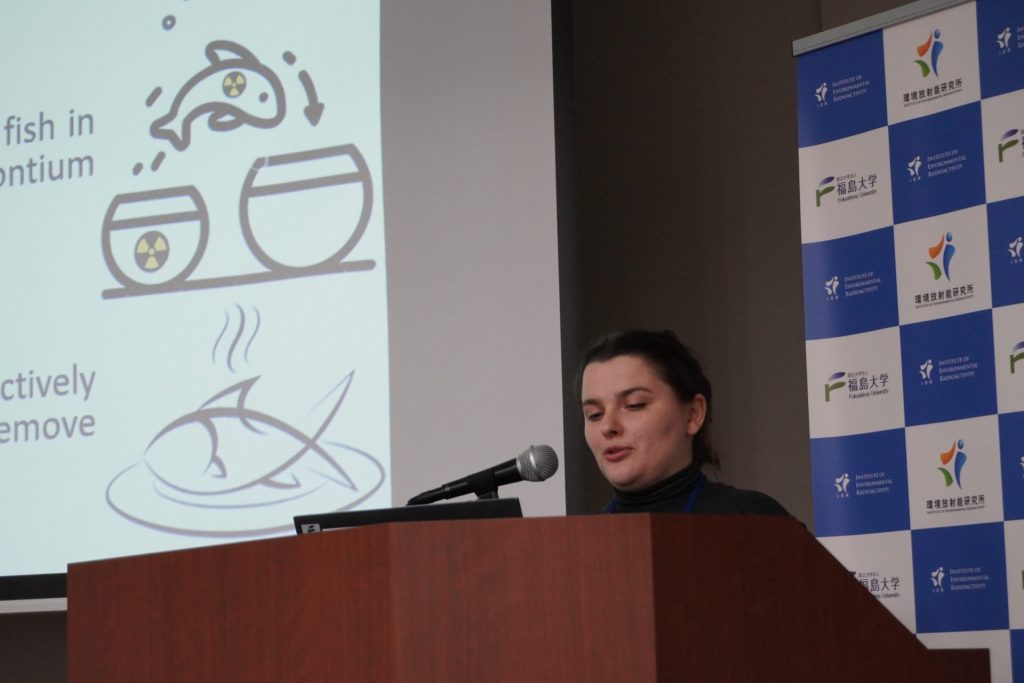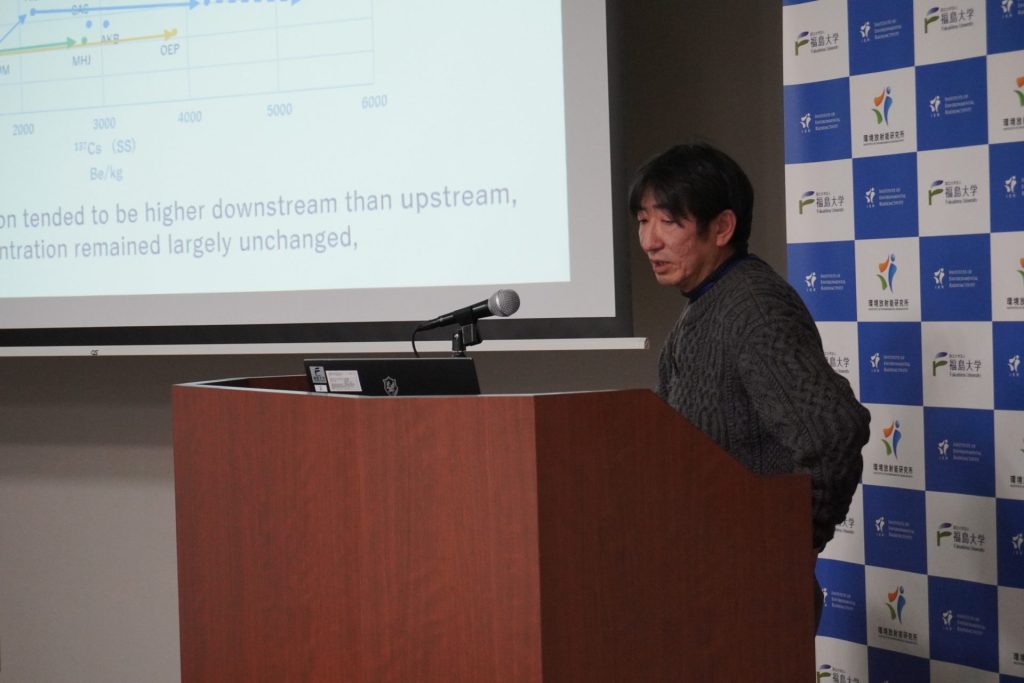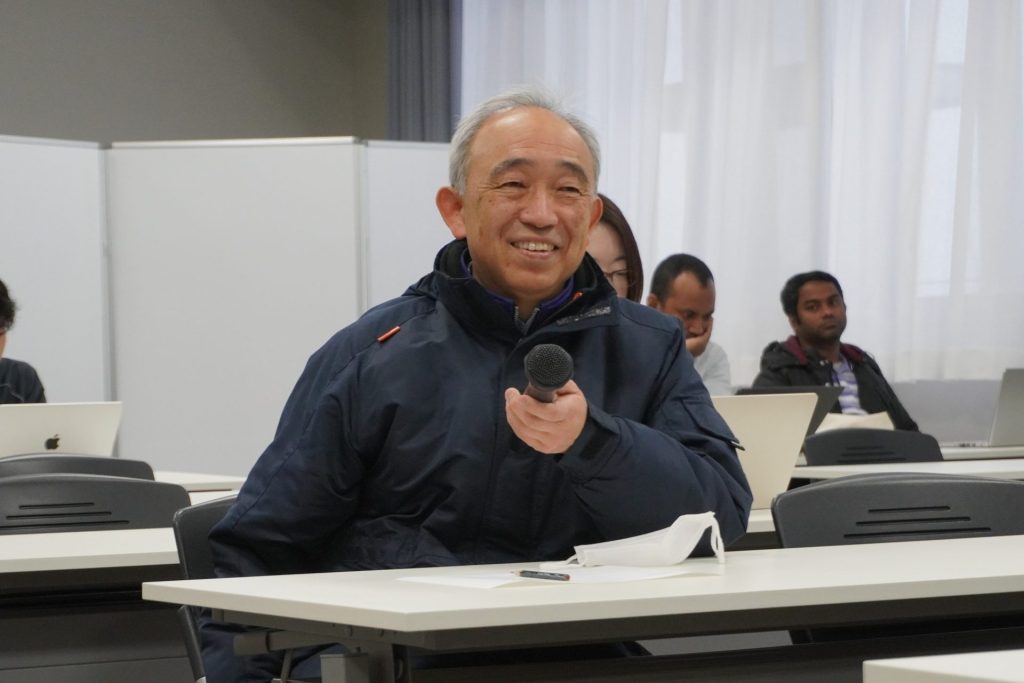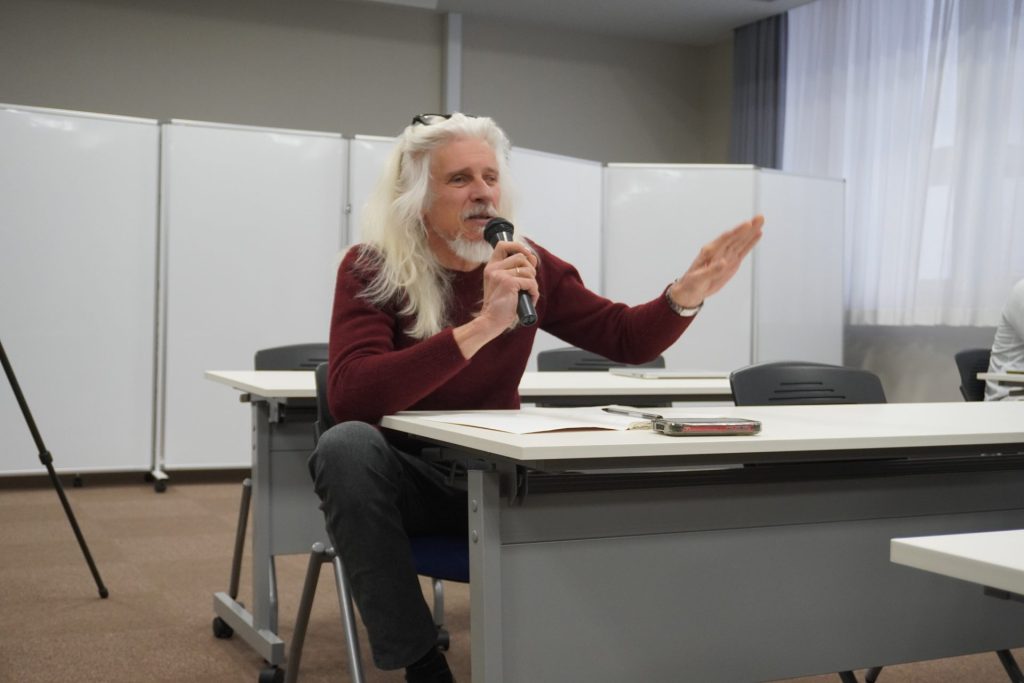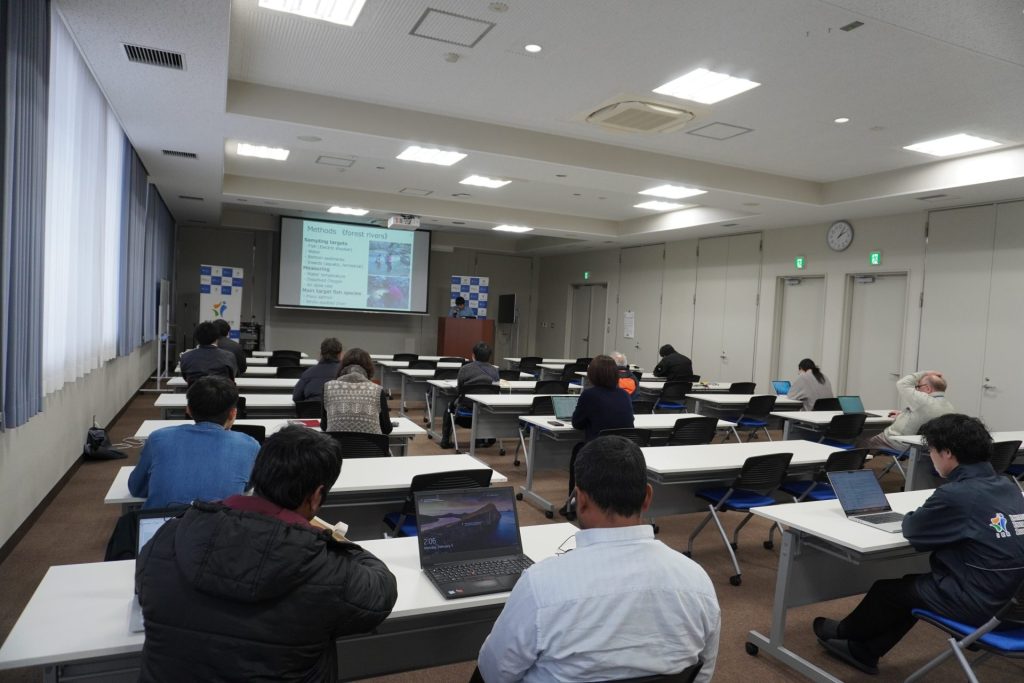February 5, 2024 10th IER seminar of FY2023 was held. <Graduate Students>
| Date & Time | February 5, 2024, 14:00-15:30 JST | |||||
| Venue | 6F Conference room, Main Bldg. IER/Online (Zoom) | |||||
| Speakers | KODAMA Fuya (First year master’s student, major in Environmental Radioactivity) Polina PAVLENKO (Special research student, major in Environmental Radioactivity) SUZUKI Nobuhiro (First year doctoral student, major in Environmental Radioactivity) | |||||
| Lecture Titles | Seasonality of radiocesium contamination of fish inhabiting the Ukedo River system (Kodama) Testing various countermeasures to reduce radioactive contamination of freshwater fish (Pavlenko) Distribution of 137Cs concentrations in the urban hydrosphere (Suzuki) | |||||
Institute of Environmental Radioactivity (IER) regularly holds the IER seminar in which the faculty members report on their research results, with the aim of facilitating their research activities and promoting communication.
In the 10th IER seminar of this fiscal year that was held on February 5, 2024, a master’s student, a special research student from Ukraine, and a doctoral student majoring in Environmental Radioactivity made presentations in English on the progress of their respective research activities. The seminar was attended by 22 IER faculty members and students.
Mr. Kodama in Wada Laboratory presented 137Cs concentrations in fish inhabiting the Ogaki Dam reservoir and surrounding rivers, as well as seasonal (summer, autumn, winter) environmental changes. Freshwater fish are still contaminated by 137Cs, and high 137Cs concentrations were observed in the fish sampled this time, especially in individuals inhabiting the forest rivers. It was confirmed that there is seasonality in water temperature and dissolved oxygen (DO) at different depths in the dam reservoir.
Ms. Pavlenko, a special research student, presented research on testing of novel methods to reduce radioactive contamination of freshwater fish by 137Cs and 90Sr. Tested methods included feeding fish diets supplemented with Prussian blue in the form of potassium ferric hexacyanoferrate (KFCF) KFe[Fe(CN)6], keeping radioactively contaminated fish in “clean” water and culinary treatment of radioactively contaminated fish parts.
Mr. Suzuki in Wakiyama Laboratory presented distribution of 137Cs concentrations in the urban hydrosphere. While it has been reported that the rate of decrease in 137Cs concentration in urban areas is faster than in forests and agricultural lands, it has also been reported that the 137Cs concentration in water and sediment in urban ponds, such as in Koriyama, is high even after decontamination compared to major rivers. A causal analysis of this concentration distribution is being underway by comparing the suspended/dissolved 137Cs concentrations in different watersheds in Koriyama and the concentrations of other constituents such as ammonium and δ15N values.
During the question-and-answer sessions, various questions and advice for their future research activities were raised from their supervisors as well as researchers in different research fields, which was a precious learning opportunity for them.
